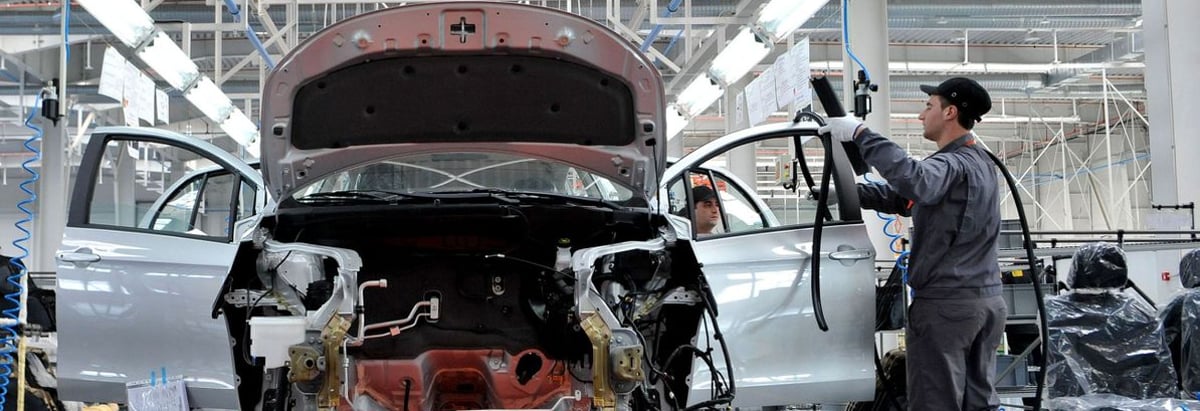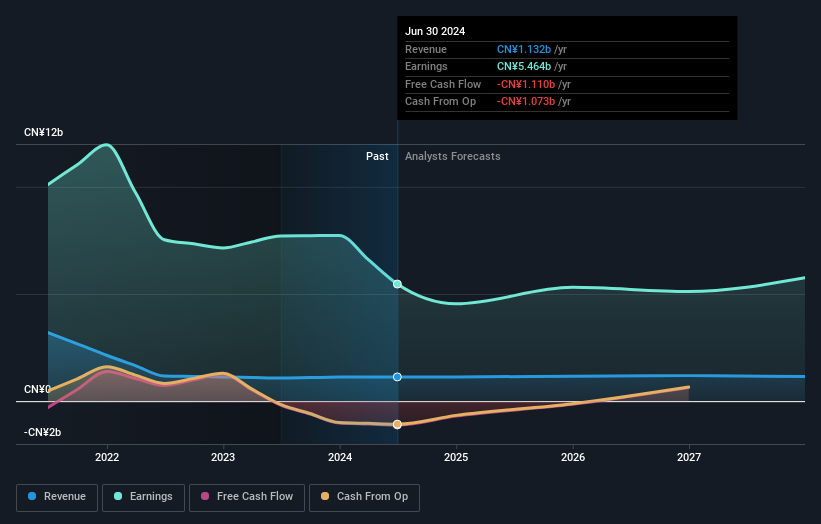Brilliance China Automotive Holdings Limited's (HKG:1114) top owners are private companies with 42% stake, while 35% is held by individual investors

Key Insights
- The considerable ownership by private companies in Brilliance China Automotive Holdings indicates that they collectively have a greater say in management and business strategy
- 52% of the business is held by the top 4 shareholders
- 23% of Brilliance China Automotive Holdings is held by Institutions
If you want to know who really controls Brilliance China Automotive Holdings Limited (HKG:1114), then you'll have to look at the makeup of its share registry. We can see that private companies own the lion's share in the company with 42% ownership. Put another way, the group faces the maximum upside potential (or downside risk).
Meanwhile, individual investors make up 35% of the company’s shareholders.
Let's delve deeper into each type of owner of Brilliance China Automotive Holdings, beginning with the chart below.
See our latest analysis for Brilliance China Automotive Holdings

What Does The Institutional Ownership Tell Us About Brilliance China Automotive Holdings?
Institutional investors commonly compare their own returns to the returns of a commonly followed index. So they generally do consider buying larger companies that are included in the relevant benchmark index.
Brilliance China Automotive Holdings already has institutions on the share registry. Indeed, they own a respectable stake in the company. This suggests some credibility amongst professional investors. But we can't rely on that fact alone since institutions make bad investments sometimes, just like everyone does. It is not uncommon to see a big share price drop if two large institutional investors try to sell out of a stock at the same time. So it is worth checking the past earnings trajectory of Brilliance China Automotive Holdings, (below). Of course, keep in mind that there are other factors to consider, too.

Brilliance China Automotive Holdings is not owned by hedge funds. Our data shows that Shenyang Cairui Automobile Industry Development Partnership Enterprise (Limited Partnership) is the largest shareholder with 30% of shares outstanding. In comparison, the second and third largest shareholders hold about 12% and 4.9% of the stock.
Our research also brought to light the fact that roughly 52% of the company is controlled by the top 4 shareholders suggesting that these owners wield significant influence on the business.
Researching institutional ownership is a good way to gauge and filter a stock's expected performance. The same can be achieved by studying analyst sentiments. There are plenty of analysts covering the stock, so it might be worth seeing what they are forecasting, too.
Insider Ownership Of Brilliance China Automotive Holdings
While the precise definition of an insider can be subjective, almost everyone considers board members to be insiders. Company management run the business, but the CEO will answer to the board, even if he or she is a member of it.
Insider ownership is positive when it signals leadership are thinking like the true owners of the company. However, high insider ownership can also give immense power to a small group within the company. This can be negative in some circumstances.
Our data suggests that insiders own under 1% of Brilliance China Automotive Holdings Limited in their own names. But they may have an indirect interest through a corporate structure that we haven't picked up on. It's a big company, so even a small proportional interest can create alignment between the board and shareholders. In this case insiders own HK$22m worth of shares. Arguably, recent buying and selling is just as important to consider. You can click here to see if insiders have been buying or selling.
General Public Ownership
With a 35% ownership, the general public, mostly comprising of individual investors, have some degree of sway over Brilliance China Automotive Holdings. While this size of ownership may not be enough to sway a policy decision in their favour, they can still make a collective impact on company policies.
Private Company Ownership
Our data indicates that Private Companies hold 42%, of the company's shares. It might be worth looking deeper into this. If related parties, such as insiders, have an interest in one of these private companies, that should be disclosed in the annual report. Private companies may also have a strategic interest in the company.
Next Steps:
It's always worth thinking about the different groups who own shares in a company. But to understand Brilliance China Automotive Holdings better, we need to consider many other factors. Case in point: We've spotted 1 warning sign for Brilliance China Automotive Holdings you should be aware of.
If you are like me, you may want to think about whether this company will grow or shrink. Luckily, you can check this free report showing analyst forecasts for its future.
NB: Figures in this article are calculated using data from the last twelve months, which refer to the 12-month period ending on the last date of the month the financial statement is dated. This may not be consistent with full year annual report figures.
Valuation is complex, but we're here to simplify it.
Discover if Brilliance China Automotive Holdings might be undervalued or overvalued with our detailed analysis, featuring fair value estimates, potential risks, dividends, insider trades, and its financial condition.
Access Free AnalysisHave feedback on this article? Concerned about the content? Get in touch with us directly. Alternatively, email editorial-team (at) simplywallst.com.
This article by Simply Wall St is general in nature. We provide commentary based on historical data and analyst forecasts only using an unbiased methodology and our articles are not intended to be financial advice. It does not constitute a recommendation to buy or sell any stock, and does not take account of your objectives, or your financial situation. We aim to bring you long-term focused analysis driven by fundamental data. Note that our analysis may not factor in the latest price-sensitive company announcements or qualitative material. Simply Wall St has no position in any stocks mentioned.
About SEHK:1114
Brilliance China Automotive Holdings
An investment holding company, manufactures and sells BMW vehicles, non-BMW vehicles, and automotive components in the People’s Republic of China and internationally.
Adequate balance sheet and fair value.
Market Insights
Community Narratives



